Geoff Wilson invited me to give this lecture in Lexington Kentucky at a Medicating Normal meeting in May to a group of healthcare professionals. Don Marks gave me the chance to repeat it a few days later at Kean University’s Psychology Department. Both groups were also asked to comment on Challenging My Doctor to Disclose.
Bill James helped produce this Truth Trust Health Video version. The text and slides are below. Truth and Trust is twinned with The Fantasies of Psychopharmacology on RxISK. In both cases the text and slides offer some more detail than the talks but it offers ‘tone’.
Slide 1: King Charles of England has just had his head chopped off. Its1649; Charles was an Absolute Monarch. A good King represented God and Truth and could be Trusted. Truth and Trust are closely linked. He defended his people against Barons and Corporations and dispensed Justice and Mercy. We, his Subjects, were called to be Holy – to live a good live aimed at getting to Heaven and enhancing the Kingdom.
Charles’s problem stemmed from printing presses producing Bibles leading some to spot gaps between the Truth he stood for and what the Book said. He encouraged Bibliophiles to move to America and make it a more Truthful place – a New Jerusalem. When this failed, his head came off.
The Monarchy was restored a decade later. We cannot live without Truth, Order and Justice and some form of authority or central pillar that keeps open a space for debate and seeking after communal and individual wisdom. See Leviathan Postscript.
Slide 2: France’s Louis XVI was guillotined 140 years later. Truth is changing. A new French passion for Science wanted to transform medicine from a Guild into a Profession embracing Science. The originators of a new Medical Model were in the crowd here. French hospitals were being organized into a grid to produce a Healing Machine. Public Health was emerging to ensure there were more French than German babies. Louis was too slow in embracing the changes.
Slide 3: Louis Villerme became the first famous name in French and global public health. He was the first to show poverty kills. He created occupational medicine. People came from all over the world to hear him lecture.
In 1835, he went to Lyon, where silk-weavers being replaced by machines were rebelling against both a loss of jobs and the alienation machines produced – their wisdom and discretion in garment making was being side-lined. In 1840, the communist party was born in Lyon.
In 1845, borrowing from Villerme, Friedrich Engels wrote on The Condition of the Working Class in England. John Griscom did the same for Manhattan. We see these as political or economic documents now but they were public health tracts then.
Slide 4: The original Revolutionary Spring took place in Europe in 1848. Borrowing the words communist and capitalist, Marx and Engels issued a pamphlet to capitalize on the moment. They didn’t take to the barricades but doctors did.
Slide 5: In Berlin, one of those doctors was Rudolf Virchow who famously said Medicine is a Social Science and Politics is nothing more than Medicine on a Grand Scale.
Virchow was a Liberal – that is a believer in Free Markets. Medicine should be independent of the State. Both Liberals and Communists looked forward to a State withering away, supported Education, Health and Votes for Women. The communists saw workers rising up. Liberals embraced science and saw an elite lifting the masses out of misery.
After 1848, the central pillar of absolute monarchy, was replaced with a central pole – held up by ropes being pulled on from Left and Right. The discretion of the monarch to dispense Justice was replaced with the Rule of Law. We transitioned from being Subjects to Citizens. And we were starting on a journey that would lead us to aim at Authenticity rather than Holiness.
The Revolutions failed the communists emigrated to Illinois.
Slide 6: Meanwhile American technology made an entry into medicine. Anesthesia had been invented bringing with it an ethical conundrum – anesthetics could kill people, was it right to do evil even though good might come of it?
Anesthesia gave the Union side in the Civil War an opportunity to let young men create surgery on the job. The Union side also created Red Cross units, Casualty units for battlefield triage, and a grid of backup hospitals.
This continued after the War, and America ended up with more hospitals and surgeons than the rest of the world put together, andstill do more operations than anywhere else. Hospitals and universities became a focus for urban development cathedrals had once been.
Slide 7: Through several World Wars, a Cold War, Vietnam and now Space Exploration, military needs have underpinned medical technology developments, including drugs, vaccines, blood transfusions, prostheses, rehabilitation medicine. Along with propaganda – or as we might say marketing – and the first ever single payer healthcare, the US Veterans Services.
In World War 2, the US Military invested heavily in developing computers. They were quick to see the possibilities of
- automating manufacturing – displacing powerful worker groups,
- automating regulation/bureaucracy
- a basis for management science
- an internet and A.I..
Slide 8: Weeks after the Great War ended, Germany had a communist revolution which was savagely put down by a socialist government who executed its leaders.
This prompted Max Weber, a free market Liberal, to comment on an emerging world. Weber is as much a hero as Marx for anyone concerned about alienation. But he argued the State never withered away. An aristocracy was replaced by deeply alienating bureaucratic techniques and procedures. He foresaw a Socialist future of imprisonment in an Iron Cage. The work of Franz Kafka a few years later brought this new alienation home to all of us.
Weber saw medical technique as amoral. He definitely foresaw From Cradle to Grave being replaced with From MAiC to MAiD we are now moving toward. Zygmunt Bauman argues Weber foresaw the Public Health moment we now call The Holocaust.
Weber distinguished a leader’s role from that of bureaucrats who facilitate the operation of government. Leaders make decisions and take responsibility the way doctors do with patients – getting a country or patient to swallow a medicine in their own interests.
Slide 9: We have held changing views on what drives history forward from God’s Providence to Great Men – leaders, artists, scientists.
Marx shone a spotlight on technology but as linked to capital and driven by efforts to profit. Weber pointed to technique as linked to socialism – and hopes for equity. Closely related both technologies and techniques operate on an algorithmic, if X then Y, operational basis.
But if we look at human history through a health lens, the military, especially the US military since the 1860s, have done more to create effective technologies and techniques than either capitalism or socialism.
There is a reason for this. Military needs create an arms race divorced from profit or equity considerations. Saving lives is not necessarily a good business model
Just as the country with the best weapons wins wars, so also the country with the best health technologies wins wars. Before the Great War, except in 1904, more people died from disease than were killed by the enemy.
Slide 10:
The Second World put totalitarianism, a Cold War where the military were more obviously calling the shots than they might appear to be now. and existentialism on our radars. Any hint of an over-arching Truth vanished – replaced by a vacuum in which order and authority collapsed. There was a new focus on individual Authenticity.
Albert Camus’s book The Plague was a metaphor for something wrong with our way of life, for which each of us bore responsibility. This plague was man-made rather than God visiting his People with a scourge for their failure to be Holy.
On the Left is Hannah Arendt a Jew. She attended the trials of German Nazis in Israel, coining the phrase The Banality of Evil which raises questions about whether monstrous men or bad systems drive history. There are marvellous video interviews of her in period style smoking heavily.
Hannah is in the frame again with current US campus protests. In 1968, she addressed campus protests about Vietnam warning that violence can destroy power but cannot create it.
In the middle is Martin Heidegger, a German Nazi. Heidegger and Arendt were lovers before the War. He developed Weber’s ideas about technology, tackling the question of how to bring morality into the frame. Perhaps the creative spirit that gives rise to technology, and also poetry, might in a poetic moment save us – See The Creation Narrative.
Slide 11: These were pressing issues given events in the real world. This 1952 photo conveys the thrill of a birth. A father, Jean Delay, flanked by friends happy for him. Chlorpromazine (Largactil/Thorazine) and Psychopharmacology had just been born.
The arrangement of people is not spontaneous. The boss speaks to his second in command, Pierre Pichot, on his right with the third in command on the left and the rest semi-irrelevant. A marvellous representation of an Old Order on the cusp of change.
Slide 12: A few years later, in 1968, Europe erupted. A new educated class, concerned to be authentic took to the streets. They marched to the office of Jean Delay and ransacked it. The same happened in Tokyo where the Department of Psychiatry was occupied for a decade by students protesting against a dehumanizing biological psychiatry.
Mystified Delay argued chlorpromazine had silenced the asylums. The silence of the grave the students responded. We were in a One Flew Over the Cuckoo’s Nest (1962), and Stepford Wives (1972) era. Pierre Pichot, Delay’s right hand man, viewed the ransacking as an overthrow of the father moment.
Slide 13: Herbert Marcuse’s One-Dimensional Man (1964) was a 1968 Manifesto. It pointed to a new reduction of everything to numbers which would compromise authenticity and destroy culture – Shakespeare would give way to Friends if more people watched Friends. He saw no ready way to stop this change, already in full-flow, from developing according to its own logic. This is an early moment in what I am calling Neoliberalism and Neomedicalism.
Slide 14: Michel Foucault also grasped the new role of numbers but saw an opportunity to leave old divisions between Left and Right behind. He left the communist party in the 1950s, arguing that by collecting and applying numbers we could govern ourselves from the bottom up. This led to the term Governance. Governance flourished in the 1990s in the form of Technocracy leaving everyone uncertain whether figures like Clinton, or Blair were better described as being on the Left or the Right.
Helped perhaps by the Soviets winning the Space Race, the Left were also turning to technology. Having educated so many it seemed crazy not to use the skills of this new educated class – their skills in technology, especially health technologies.
Governance and technocracy brought any Central Pillars or Tent Poles crashing down. There was a new focus on doing not thinking. Truth was semi-irrelevant. Efficiency counted for more. A Collapse in Authority might sound good to many but it brought with it a Loss of Common Sense and a turn to Short-Termism.
Slide 15: Mental Health brings this out better than anything else. The Mental Health tent pole had been held up by doctors pulling one way with drugs and everyone else pulling the other way. It created a space, an arena in which different views could be aired.
This is gone. In the image above doctor and psychologist are indistinguishable. There is no option now for both sides but to embrace what gets called Evidence Based Medicine. EBM holds itself up as the Truth – to practice otherwise would be unethical. In the wider political domain this gets called Neoliberalism. Most people aren’t sure what this word means – it’s consequences can best be seen in health/clinical spaces.
Slide 16: We usually think of Neoliberalism as starting with the Chicago School and the imposition of a metric through which Chile would be governed. But if numbers provide the basis around which everything gets organized, a la Foucault and Marcuse, the story had begun before that.
Wonder Drug undercuts the narrative that Americans were saved from the horrors of Thalidomide by one woman, Frances Kelsey. There were thousands of US cases FDA went out of their way not to find. What FDA did next instituted Neomedicalism causing a growing number of global drug induced deaths and injuries.
Slide 17: The 1950s were a miraculous decade for drug discovery – psychotropic drugs, antihypertensives, antibiotics, hypoglycemics, steroids, and others – all developed without controlled trials. These drugs cured problems getting in the way of us living the lives we wanted to live – unlike the drugs we have now. Life expectancy rose dramatically.
Here in the Oval Office in 1962 John Kennedy has just signed a new Food and Drugs Act – standing up he hands the pen to Frances Kelsey the only woman in the room. She had slowed thalidomide down using the 1938 FDA Act, which like regulation for food, automobiles, stock markets etc, focused on safety.
Something had to be seen to be done about thalidomide. A few years before, Louis Lasagna, a leading clinical pharmacologist, had suggested that along with proving their drugs were safe, companies should show their drugs worked – too many drugs didn’t work and if a drug doesn’t work it can’t be safe.
Lasagna was a convert to a new technique called Randomized Controlled Trials (RCTs) which he believed companies could use to demonstrate a drug worked. What does it mean for a drug to ‘work’. Most people would say that it should save lives and reduce disability. If a drug did either of these it would contribute to safety.
The new 1962 Act required companies to prove their drugs were Effective. Kelsey was the only woman in the room when this Act was signed. She held up thalidomide through an act of professional judgement – a sleeping pill, even if effective, should not cause a peripheral neuropathy. The new Act replaced her judgement with an algorithm. An Act, aimed at containing pharmaceutical companies, handed control to them.
An algorithm biased toward efficacy meant, as Tom Lehrer later sang about the Arms Race: Once the rockets are up who cares where they come down – that’s not my Department says Werner von Braun.
Slide 18: Two years earlier, Merrell had given Thalidomide to Lasagna who ran a placebo-controlled RCT, showing it was an effective sleeping pill. The RCT missed the SSRI like agitation, suicidality and sexual dysfunction it causes.
Thalidomide sailed over the hurdle put in place to stop it happening again. Rather than giving us effective drugs, RCTs are a way to get weaker drugs on the market – they just have to beat placebo.
If ‘working’ means showing your drug saved lives or reduces disability – a trial like this could take a decade. This is not going to work for pharmaceutical companies. Instead we got a default into showing an effect – a change in cholesterol or sugar levels, or bone density. A drug said to work because it lowers your rating scale score can kill more people than it saves or a drug that thickens your bones can cause more fractures than it prevents.
The Act required companies to produce drugs for diseases. This incentivized companies to make us all diseased – ideally with several diseases. Our high cholesterol levels became diseases just as dangerous as heart attacks or strokes. Our mood scores became risks for suicide in need or treatment – when most mood variation sorts itself out after a few weeks.
The biggest problem was a replacing of professional judgement with mindless efficiency.
Slide 19: What are RCTs? In 1948, Tony Hill reported on the first one – of streptomycin for tuberculosis. Hill used randomization as a method of fair allocation. Just like Lasagna’s Thalidomide RCT, Hill’s RCT told us less about streptomycin than a prior non-randomized trial in the Mayo Clinic, which showed it can cause deafness and tolerance develops rapidly
Slide 20: In 1965 Tony Hill took stock of RCTs in a lecture to doctors. He says companies have quickly become the main promoters of the RCTs put in place to contain them.
If randomization. or double-blinds, or placebos got in the way of doctors evaluating a drug, he said, get rid of them. He was a believer in Evident Based rather than Evidence Based Medicine.
He said we had needed RCTs in 1950 to work out if anything worked. By 1960 he figured we had lots of things that worked – none of which had been brought on the market through an RCT – and he thought the need was to find out which drug worked best. RCTs can’t do this – there is no such thing as a best drug. RCTs have instead become a way for companies to get weaker drugs on the market.
Hill said RCTs produce average effects which don’t tell a doctor how to treat the patient in front of them. All drugs do a thousand things – one of which might be useful for treatment purposes. Focusing on one element is not a good way to evaluate a drug. All RCTs generate ignorance. We can bring good out of this harm if we remain on top of what we are doing.
Slide 21: Soon after Lasagna began echoing Hill:
In contrast to my role in the 1950s which was trying to convince people to do controlled trials, now I find myself telling people that it’s not the only way to truth.
Evidence Based Medicine has become synonymous with RCTs even though such trials invariably fail to tell the physician what he or she wants to know which is, which drug is best for Mr Jones or Ms Smith – not what happens to a non-existent average person.
Slide 22: The 1950s gave us the best antihypertensives, antibiotics and other drugs ever – all without RCT input. Imipramine, the first antidepressant, is stronger than SSRIs and treats melancholia which SSRIs can’t. Melancholia increases the risk of suicide 80-fold.
Imipramine was launched in 1958. By 1959, while praising it to the skies, doctors practicing Evident Based Medicine could still see it made some people suicidal. Stop the drug the suicidality clears. Re-introduce it, suicidality comes back.
Because it treats this high risk condition, an imipramine v placebo RCT in melancholia should show more red dot suicide attempts on placebo even though imipramine can cause suicide. This RCT would look like evidence imipramine cannot cause suicide.
Slide 23: In the mild depression trials bringing SSRIs to market – there is an increase of suicidal events compared to placebo in people at little or no risk of suicide.
Slide 24: An imipramine comparator in the same trials also caused suicides. Context means that RCTs can give opposite answers for Drug X. There is no absolute truth.
These are Treatment Trials not Drug Trials. Believers claim RCTs control all confounders in all known universes, but if a condition and treatment produce superficially similar effects, RCTs cause rather than solve confounding.
If a patient has a problem on a drug in a trial, as Hill said, a doctor needs to work out what is happening but in company RCTs clinicians are not let use their judgment.
Slide 25: Healthy volunteer studies are Drug Trials. In Drug Trials in the 1980s, companies found SSRIs caused suicidality, dependence, and sexual dysfunction. We heard nothing about this when the drugs launched because Drug Trials enabled companies to engineer Treatment Trials to hide these problems.
Slide 26: In 1998, Don Schell, a tough oilman from Wyoming with a minor sleep problem was put on Paxil. 48 hours later he shot his wife, his daughter, his granddaughter, and himself. His son-in-law took a lawsuit against GlaxoSmithKline (GSK) – Tobin v SmithKline.
In the Tobin case, Ian Hudson, Chief Safety Officer of GSK was asked – Can SSRIs cause suicide. He says GSK practice Evidence Based Medicine (EBM) and base their views on RCTs, which do not show the Paxil sacrament has any side effects.
A jury of 12 Wyoming folk with no background in health thought Hudson was Mad. They dismissed EBM in favor of Evident Based Medicine – Common Sense. It was obvious Paxil caused these homicides, they said, and GSK were guilty of negligence.
Hudson, however, later became the CEO of Britain’s drugs regulator, and these Mad views are dug in at the top of FDA, EMA, and WHO.
Slide 27: Hudson’s views appeal to regulators and journal editors because statistical significance tests suggest objectively – almost infallibility. Statistical significance is a model developed to characterize expert knowledge. Unless chance gets in the way or some trivial overlooked factor, experts get the right answer – like Robin Hood here.
Experts don’t explore the unknown. Randomization can’t control for ignorance or incompetence.
Slide 28: The RCTs done to license drugs, especially antidepressants, look like this rather than like Robin Hood. The response of patients to the antidepressants we give them is also like this. We are not dealing with expertise and significance tests should not be used.
Slide 29: By 1980 medical statisticians advocated replacing Significance Tests with Confidence Intervals. Confidence Intervals were introduced by Gauss in 1810 to solve a telescope problem. Because of measurement error, telescopes then often failed to establish if there was one or two stars in a location. As measurement errors distribute normally, confidence intervals helped astronomers decide if they were looking at one or two stars.
But are differences between people a matter of measurement error? In a pharmacology practical decades ago, I gave a colleague a beta-blocking drug. These reliably slow heart rates. Her heart rate got faster. This is not a matter of measurement error.
Slide 30: Confidence intervals are no more valid than Significance Test but the usual story is they allow us to estimate the size of an effect and the precision with which it is known. The details on the likelihood of the Red Drug killing you here are more precise than for the Yellow Drug. But it looks like the Yellow Drug might be more lethal. The standard view is that if we increase the size of the Yellow Drug Trial, we will have greater precision and know better what its risks are.
FDA and WHO say only the Red drug is dangerous. I’m telling you if forced to choose take the Red Drug.
Slide 31: The sacred mantra of RCTs is randomization controls for all confounders in all possible universes. Randomization, however, introduces confounders into clinical trials as the next 3 slides from a GSK paper prepared in 2006 for submission to FDA show. The bolding at the bottom gives you the key details.
The suicidal event data for Paroxetine in Depression trials show it causes suicidal events. But randomization and Confidence Intervals come to GSK’s rescue.
Slide 32: GSK also did 2 trials in Intermittent Brief Depressive Disorders (IBDD) – patients who have regular suicide attempts. Paroxetine didn’t do well – one trial was stopped it was doing so poorly. Why do these trials?
Slide 33: When you add these figures together suddenly paroxetine protects against suicide. First you need to know IBDD patients could be admitted to MDD trials – we have no way to distinguish them. Some patients get diagnosed IBDD because of a poor response to an SSRI. What happens if IBDD patients are in an MDD trial is the same as if you add the groups of trials together as we did here.
This scenario can happen every time a medical condition is heterogenous – diabetes, dementia, parkinson’s disease, breast cancer, back pain, hypertension. In these cases, randomization will hide effects good and bad – and enable us to use a problem a drug causes to hide a problem a drug causes.
Slide 34: The Red Drug here is the MDD curve alone. Traditional wisdom is that adding some more events to the Red Drug trials should give us a more precise version of the same estimate. And adding 3 IBDD cases per 100 MDD cases allowed GSK to shift the curve to the opposite side of the 1.0 line. It’s a more precise confidence interval but this precision speaks to our ignorance rather than to better knowledge. No medical statistics book ever hints at this possibility.
We could add 40 suicidal events to the IBDD arm before GSK might admit Paroxetine causes a problem – on the basis that the results are now statistically significant.
Confidence intervals do not help us work out what is going on in these cases. Nor do they help in heterogenous drug responses. If some are sedated by a Red Drug and others stimulated by it, the best estimate of the Red Drug’s effect will lie on the 1.0 line, apparently showing this drug has no effect on sleep. A method to distinguish between one and two stars should not produce an answer that there are no stars..
Slide 35: The figures and curves you’ve seen are no more real than the Zodiac signs or Covid Models here. All are models built on assumptions.
Regulators want models like statistical significance and confidence intervals to make decisions for them. Companies want them because they are Biblical – that is most people believe they must be True.
Slide 36: There is an old saying if you want to eat sausages don’t go to the factory where they are made. The Catholic Faith version says if you want to believe don’t visit the Vatican.
Now it’s time to visit a modern Holy of Holies. Here are the suicidal events in the trials that brought us Prozac, Paxil and Zoloft around 1990. Note the events under screening – a 2 week pre-trial washout period when people are taken off prior drugs before starting the new treatment or placebo. Washing out psychotropic drug can push people into withdrawal and suicide.
Slide 37: When submitting the data to FDA, companies moved events as you see here. They argued that people in washout were not on active treatment – which is the same as being on placebo. The same argument was used for end of trial maneuvers. FDA turned a blind eye to these regulation breaching maneuvers – as companies happily told us.
Slide 38 What’s up? Paul Leber head of FDA’s Psychopharm Division in the mid-1980s, said ‘For 20 years we have let companies run trials comparing a new to an old drug – these can’t tell us if a drug works. Both drugs might look the same – but neither may be working. You have to beat placebo for an assay to work’. This caused a crisis because SSRIs couldn’t beat placebo.
Slide 39: Zoloft Approval Committee Meeting 1991
Leber: How do we interpret… two positive results in the context of several studies that fail to demonstrate that effect? I am not sure I have an answer, but I am not sure the law requires me to have an answer.
In a sense, the sponsor could just do studies until the cows come home until he gets two of them that are statistically significant by chance, walks them out and says he has met the criteria.
This shows you FDA don’t do science. They bureaucratically tick a box – yes there are 2 assays that meet a standard FDA and the companies have agreed between them.
Slide 40: There are more dead bodies on SSRIs than on placebo in RCTs yet Ian Hudson told you RCTs show Paxil works. Working is based on surrogates for lives saved – lipid levels rather than heart attacks. For antidepressants it’s the Hamilton Rating Scale for Depression.
Companies and regulators agree that an on-average 2 point change in a Hamilton scale lets regulators license companies to claim their drug is an antidepressant even though more people die on it or try to kill themselves than on placebo.
Slide 41: When you hear FDA you hear God you hear Science. FDA regulate Food and Drugs. With butter, chocolate or drugs, companies must meet an assay standard – so much cocoa solids, animal fats, or points on a Rating Scale in 2 trials. Meet that and FDA let you use the words chocolate, butter, or antidepressant. Is this good butter? Is chocolate good for you? Will this drug save your life? FDA don’t decide.
Slide 42: Laxatives bring out an important point about regulation. Almost no drugs are Magic Bullets. They offer Therapeutic Principles. In the case of laxatives there are 4 therapeutic principles – 4 different ways to work and only one of these will likely help your constipation. Get the wrong one and you may end up on 4 laxatives, doing different things and perhaps causing treatment resistant constipation.
The same is true for antihypertensives, hypoglycemics, and almost all drugs. Doctors used to be better at working out which therapeutic principle was right for you. But once companies get a license to use the word laxative they work to replace clinical skills with a reflex prescribing of any laxative. They don’t mind if you are 4 laxatives provided one of them is theirs.
Slide 43: FDA approval does something else. After thalidomide women avoided drugs in pregnancy and now avoid soft cheeses, processed meats, alcohol, coffee and hot showers. But soft cheeses do not come with a label on them saying Eat This. Labels like this, as in Alice in Wonderland, can shape behavior with crazy consequences.
Slide 44: Women now consume an ever growing amount of drugs and vaccines in pregnancy. The cartoon here riffs on Rousseau’s famous clarion call before the French Revolution.
Slide 45: On the left is the most famous assay in medicine – Study 329. It is an example of the assays companies do to get a drug on the market – Paxil for children in this case. The journal has the highest impact factor in children’s mental health. The authorship line is to die for – except the author is not there. Sally Laden a medical ghostwriter wrote it. This ghostwriting holds true for almost all articles on any on-patent drug in any area of medicine.
New York took a fraud action against GSK for this publication and as a result some of us had access to more company data than FDA ever has. Our restoration shows that with access to the data, the claim the drug was safe isn’t right – we found 1 in 6 children on Paxil had a significant behavioral event – mostly suicidality.
Slide 46: A year after the fraudulent Study 329 was published, GSK applied to have Paxil approved for children who are depressed. Here is part of a letter FDA sent GSK approving Paxil in pediatric depression saying GSK have told FDA Study 329 is negative. FDA agree – all 3 trials are negative. FDA will still approve Paxil for kids. FDA also agree with GSK’s suggestion it would be better not to mention the negative trials in the drug label. Why would FDA agree to this?
Slide 47: This Erick Turner slide from 2008 shows that almost all published adult ‘trials’ for antidepressants indicate the drugs work well and are safe.
Slide 48: A second slide shows FDA view of these trials. Many published as positive were negative to add to the unpublished negative trials. Over 50% of antidepressant trials are negative. Meta-analyses now pitch sertraline as the drug to take – this slide suggests it’s one you should avoid.
Shocked? It’s not FDA’s job to police the medical literature. Whose job is it? Doctors and journal editors. I should also tell you Prozac didn’t work in the pediatric trials either.
Slide 49: St. Augustine famously said Our Hearts are made for Thee Oh Lord and cannot rest until they find their rest in Thee. This points to a discontent, an unease in all of us that Calls us to Something. It was once a Call to Holiness, then Authenticity and now Health.
Slide 50: Around 1980, abandoning anything that smacked of professional judgement, pharmaceutical companies turned to numbers and capitalized on our discontent, just as economists turned to money supply and interest rates numbers seeing it as a neutral road between left-leaning or right-leaning leadership.
There can be a rationality to numbers. Elevated blood pressure figures may need to come down – especially if, as was originally intended, this was to be done by getting people to restrict their salt intake. This doesn’t involve money changing hands or taking a poison.
No-one foresaw that managing our numbers would become a way to transfer money from the poor to the rich. That Hedge Fund abilities to bet on the numbers would circumscribe the ability of Doctors to treat Patients or Leaders to Lead a Country.
Numbers are Amoral. The only morality around is the morality we bring to them. Unless we are wide awake, we get transformed from Citizens into Consumers or now in a Scial Media age perhaps even Cyborgs. Health replaces Holiness or Authenticity as our goal in life.
This is because as Goldman Sack’s said – saving lives is not a Good Business Model.
Slide 51: The story is not a new one. In the 1860s in France the first weighing scales for people appeared. A decade later a new disorder was described – Anorexia Nervosa. When Scales later came with plates attached giving ideal weights for height and sex, eating disorders mushroomed. When we all got scales in our homes, eating disorders exploded in the West – with debates about child abuse and the role of women etc – but not in countries with no weighing scales.
Fasting with a view to Holiness vanished, replaced by Fasting as a means to attain an Authentic Self and since then as a route to Health – Fasting replaceable with a sacramental Ozempic if Fasting alone doesn’t do it.
Companies began treating our numbers in the early 1980s. First called risk factors, they later became chronic medical disorders. We ended up with multiple conditions at the same time. Healthcare once treated problems we brought to it – now reconfigured into Health Services it gives us problems.
Prevention has moved from doing all we can to avoid strokes to doing all we can to avoid wrinkles by taking preventive Botox starting in adolescence.
Slide 52: Osteoporosis was first described in the 1860s before Anorexia Nervosa. It remained rare until the 1980s when marketing bisphosphonate drugs companies gave away free bone scanners. The disorder mushroomed and now 1 in 3 women over the age of 50 have some bone thinning. Teenage girls now hear about this disorder lying in wait for them and almost certain to affect them.
Treating it should reduce morbidity but abnormally thickening bones is a recipe for more serious fractures and damage than leaving the condition untreated. And Health Services employ staff to market these drugs for free for pharma – the staff to screen patients, run scanners, audit the poor results and manage clearly failing services that must be failing because they are not keeping to Guidelines recommending bisphosphonates.
Slide 53: With the pandemic governments found themselves able to treat the public as an individual by means of Dashboards. We created Dashboard Nervosa in the process.
We have transited being a people visited by plagues if we fell below the accepted standards for Holiness, to being a people affected by Plagues because we had too many inauthentic individuals in our midst to being a people vanishing behind a miasma of non-existent averages.
Slide 54: This Leunig Cartoon marvellously illustrates the point – Everyone now senses There is something wrong with our Way of Life but putting a finger on the problem is the problem.
Slide 55: One of the hottest topics around now is that suddenly it seems that 18-30 year olds are claiming more disability than people in middle years. This is a complete reversal of everything that has gone before. The claims are on the basis of mental disability – ADHD, autistic spectrum disorders etc. I don’t blame them – See The Great Silence. If there is a system that Hedge Funds game, why not game it but these are rating scale diagnoses – as Bart and Homer may illustrate.
Slide 56: This Simpson’s cartoon speaks to how things were. Bart would now produce his rating scale score and Homer would have no option but to bring him to a doctor conditioned to treat numbers even if it’s with drugs that don’t work for conditions that don’t exist in this age group.
Slide 57: The road to polypharmacy in this age group is paved with Good Rating Scales. This teen is on 10 psychotropic drugs. Both the NYT, and NY Post – so both Left and Right – agreed on this issue on the same weekend in 2022.
If Bart goes to the doctor and he is treated the way this girl was and get’s an SSRI and becomes suicidal, he will be told he needs a mood-stabilizer, first an anticonvulsant then an antipsychotic. When he loses some focus on the antipsychotic, given an ADHD scale he will be told he’s got ADHD and will be put on stimulants that pull the opposite way to the antipsychotic.
This is as crazy as someone standing on a weighing scales with a heavy dumbbell in hand and then being told – My God you’re 2 stone overweight – you need Ozempic.
Slide 58: This Generation problem has hit the headlines lately. Books like Jonathan Haidt’s The Anxious Generation, which fingers smartphones and cyberbullying as a source of the problem, and researchers like Danny Blanchflower are drawing attention to some dramatic changes leading to plummeting figures for wellbeing and rising figures for suicide in this age group.
Are events like the events the term Cyberbullying conjures up the cause of teen discontent or is it something else that could be called Bullying – the simple like or dislike buttons that pressure us to be part of an ingroup. Everyone wants more friends. Why stop at 50,000? What horrors if you drop to 49,000 when everyone else is marching on?
Or is it the fact that companies were quick to colonize these new platforms when they appeared – getting us to monitor our every fluctuation in emotions, moods, physiology, sleep, number of steps taken etc with any variation from the average something we can help you correct because ‘You’re Worth It’?
If its Cyberbullying of the kind Haidt and Blanchflower mean do we know its not caused by SSRIs? When ISIS were releasing videos of Westerners being beheaded, people on SSRIs used to watch these in order to be able to feel something – so numbing can these drugs be. It’s not a big stretch to think they might cyberbully in order to feel.
Slide 59: This returns us to a central point – Justice and the Rule of Law.
In 1618 Walter Raleigh was executed for being too close to some Europeans. He was convicted on the basis of things said about him by people who did not come into court to be cross-examined.
The legal system recognized an injustice and introduced Rules of Evidence. Hearsay could not be used as evidence. Jurors – a group of 12 people, Xtians, Hindus, Muslims, Atheists and Jews, can only base a verdict on material put in front of them that can be examined and cross-examined. The process of forcing 12 people with very different biases to come to a Verdict about what is in front of them is the essence of justice and science.
Verdicts and diagnoses are provisional, which might appear to contrast with the objectivity of science, but scientific views are similarly provisional. Scientists attempt to overturn verdicts with new data.
Let’s say I gave Taylor Swift fluoxetine some years ago and she became suicidal. I could examine and cross-examine her to see could we explain this in any other way. She is the data, the apparatus in which the experiment is taking place and can contribute critical details. In addition we can run labs and scans, raise the dose, stop the drug, or add an antidote.
If we all conclude fluoxetine made Taylor suicidal and report this to FDA, the first thing FDA will do is to remove her name and mine. No-one can now examine or cross-examine her and come to a scientific view about a link to treatment. Her injury has been made Hearsay – Misinformation.
If you are later injured in the same way and see tens of thousands of reports of suicidality on SSRIs on FDA’s adverse event reporting system, you cannot bring this into court because no-one can be brought into court. It’s Hearsay not Evidence.
Company RCTs are equally hearsay and should not be let into Court as evidence. Accessing the data means accessing people and we cannot do that with subjects in company trials, who often don’t exist. Company articles are ghostwritten and the authors, who have seen none of the patients, cannot speak to what happened either.
In contrast, if Taylor and I report her case in a Medical Journal as a Case Report, with our names on it, this is evidence and we can both be brought into Court.
Slide 60: By 1983, a view was gathering pace that RCTs offered the scientific way to establish if a drug causes an adverse event.
Spontaneous reporting is “the least sophisticated and scientifically rigorous . . . method of detecting new adverse drug reactions” – Rossi et al 1983
In response Lasagna said:
This may be true in the dictionary sense of sophisticated meaning ‘adulterated’ . . . but I submit spontaneous reporting is more ‘worldly-wise, knowing, subtle and intellectually appealing’ than grandiose, expensive RCTs. – Lasagna 1983
Slide 61: Seven years after Lasagna said that good clinical interviews were the way to recognize a drug was causing a problem, 3 Boston clinicians, on the basis of good clinical interviews, claimed fluoxetine caused 6 people to become suicidal. Analyzing the cases closely, these clinicians established that fluoxetine could make some people suicidal.
Lots of other groups reported similar findings – cases of people who were challenged, dechallenged and rechallenged with an SSRI. Children. Evident Based Medicine said that fluoxetine could cause suicidality.
Slide 62: In response, BMJ published an article in which Eli Lilly, the makers of Prozac, claimed an analysis of their clinical trials gave no evidence Prozac made anyone suicidal. The cases being reported were sad but anecdotal – and the plural of anecdote is not data. Depression was the problem not fluoxetine. Clinical trials are the science of cause and effect. Doctors, the public, media, and politicians were being asked – are you going to believe the science or the anecdotes?
Lilly and BMJ conspired to create what got called Evidence Based Medicine but in practice is Assay Based Medicine. Now just as with RCTs 30 years earlier, the people most commonly exhorting doctors to practice EBM today are Pharma companies.
the original phrase is the plural of anecdotes is data – otherwise Google wouldn’t work.
Is the disease responsible for suicide attempts and suicides in healthy volunteers?
But the key point is Evident Based Medicine is the science. You’ve seen how the figures have been manipulated and in particular how there is no Data behind them. Lilly are dishing up not RCTs or EBM but Artefacts and Hearsay. My challenge to you is which are you going to believe the Science or the Artefact? Followers of Hearsay are in practice executing their patients every day of the week.
The Science of Medicine lies in making hard judgement calls. Algorithms can’t do it. When we get access to company assay data, the Teicher et al Evident Based Medicine and Lilly approaches can be reconciled – as you might expect with real science.
But let’s says there had been a real incompatibility. As the earlier imipramine data demonstrated a drug that causes suicide can also appear to prevent suicide in RCTs. Resolving discrepancies is how we do science.
Lilly are not in the business of resolving discrepant observations, recognizing both Evident and Evidence Based Medicine might be right. Lilly’s argument is a religious one – a dogmatic one – they forbid us to believe the evidence of our own senses.
This way leads to a Loss of Common Sense and a Turn to Short-Termism.
Slide 63: The combination of EBM and Big Data has led to both those injured by a drug and anyone in healthcare supporting their point of view being Cancelled. Even if we can point to Black Box Warnings, these are viewed by most of the public, Joe Biden and the Pope, as May Contain Nuts labels – just regulators and companies covering their back and not something that even people with a severe nut allergy need to pay heed to.
Slide 64: Things have got steadily worse. FDA have turned to Big Data – called Real World Evidence. Most people likely agree that analyzing insurance databases, adverse event reports, with data from your smartphone, wearables and other sources will produce a better answer than any view Taylor Swift or David Healy might have.
This is wrong. Big Data produces the equivalent of Schrodinger’s Drug Injury. Quantum Physics is all about Big Data but has a problem if there is a Cat in a Box who might or might not be dead. No matter how big the data, Quantum approaches can’t tell us if the Cat is alive or dead or whether a Drug injured us or not.
A Quantum approach gives us a 50-50 chance of getting it right – leading Einstein to say God Does not Roll Dice. We, however, are analyzing a history not predicting a future and are able to tell if the Drug caused the injury.
Slide 65: We now have a Truth, Trust and Health Crisis. This 2024 SAMHSA Preventing Suicide Strategy appeals to Shared Decision Making, Informed Consent and Lived Experience, but it does not want your Lived Experience if this includes being harmed by a drug – See Challenging My Doctor to Disclose.
This strategy built on an often fraudulent, ghostwritten literature, which even as published shows an increase in suicidal events on treatment, can only lead to more deaths – not less. There is no Truth here. At present, no-one from the summits of Earthly (Biden) or Spiritual (Bergoglio) ‘leadership’ can be Trusted. The CEOs of companies making these drugs, even after they lose wives to suicide, can be trusted. They are all followers of, slaves to, the numbers. Participation in strategies like this transforms us from Consumers, who even in the animal kingdom can reject a poison on the basis of taste, into Cyborgs, whose behavior is shaped by programs.
Slide 66: What can save us? The usual histories of science start with the foundation of The Royal Society in 1660 created by Charles II on succeeding his beheaded father.
The Royal Society ground rule said – Science would deal with matters that could be Settled by Data. Participants could be Xtian, Hindu, Jew, Muslim, or Atheist, but they were called on to leave these badges at the door and come to a consensus about how what had happened in the experiment in front of them and how to explain it by further experiments if need be.
The histories of science emphasize the word Data. Settled is a more important word. Statistics played no part in this science. The experiments were events that didn’t need statistical descriptions. Science does not replace judgment calls with a statistical artefact – these only came into the frame with regulation in 1962 and Lilly’s defense in 1991.
Slide 67: Doctors and pilots have adverse event reporting systems. When pilots report, safety systems pay heed because she has an incentive to get things right if you die, she dies. The system knows she and her colleagues won’t fly unless things are put right.
Jane Frazer on the right is the CEO of Citibank. At the time of the financial crash, bankers and financiers were seen as being in a state of moral hazard. Their job was outsourcing risk knowing that if things crashed, the bank would repossess your home. You would lose but they would still get bonuses. There was no incentive for them to be honest with you.
Doctors now also operate in a state of moral hazard. They put pills in your mouth and if these kill or maim you, you lose but they collect their pay. Things can only go wrong for them, if they agree the treatment injured you. They have no incentive to do the right thing.
Slide 68: A target based financial culture from 1980 onwards, that financiers could bet against, created the 2007 crisis. Medicine now has a target based culture – blood pressure and rating scale targets – that managers insist you meet. We now have a pharmaceuticalization crisis to rival the 2007 financial crisis. Then money chased money as poverty rose, now drugs chase drugs as life expectancy and reproductive rates falls.
Slide 69: A polypharmacy pandemic has made reducing medication burdens the most important task of our day. But it is not easy. Many of these drugs explode on attempting to withdraw them.
No RCT or Guideline can ever help with this. We need to respect reality, rather operate on the basis of models.
If I am helping you, we both need to remember that you are the pilot. My experience tackling similar situations and ability to consult colleagues may help but you are the pilot and key researcher. You have clues from missing doses of drugs, and a sense of what the drugs are doing that only you can access. Above all my role is to help you live the life you want to live. To get you to where you want to go, rather than hijack the plane.
I’ve said Big Tech can’t help us but curiously Cybernesis is Great for a Pilot – the word that leads to government, governance, cybernetics and cyber-everything. We may be on the verge of an A.I. that can learn from its mistakes.
A.I. at present has to be binary – that is rather than turning to Big Data it must choose between options. In these circumstances will it learn that it should support a doctor who believes in a ghostwritten fake medical literature reporting trials that are not designed to help us with the situation you are in or does it support a two-person dyad who might make mistakes but has a track record in getting the benefits and hazards right.
I think such an A.I. will have no option but to endorse a Relationship Based Medicine rather than a Numbers Based Medicine.
Relationship Based Medicine is the only possible science. The person on meds is the apparatus in which the experiment is taking place. Every person and their response to drugs is unique. And both partners need to arrive at a consensus.
Slide 70: Telescopes, especially the James Webb Telescope, make a point. Confidence intervals were a step on the way to revealing the individuality of stars. Science is all about individuality – we seek to pinpoint individual genes, stars and people. In medicine, statistical approaches are biased against individuality. We need to use them with care in order to bring good out of the use of an amoral technique.
We have been sold the idea that using Chance to control Bias is scientific and have allowed mindless algorithms to replace clinical judgement. But like law and the first 300 years of science, Clinical Medicine made progress by using Bias to Control Chance. It has stopped making progress. We need to re-assert the validity of consensus and the need to avoid mindlessness.
Leviathan Postcript
A struggle for power between Charles and Parliament in the 1640s led to his execution in 1649. Thomas Hobbes took the Chaos of a Civil War and its aftermath as evidence we need a Ruler, a Monarch or a Leader. Without Authority we get chaos, which gets in the way of us living Good Lives – whether holy, productive or healthy. Otherwise Life ends up being nasty, brutish and short.
Once again, ‘Truth’ has toppled and where it once was we now have a Vacuum. There are no Leaders – everyone from Presidents to Popes are Followers of the numbers. Where Trust once was, we have conspiracies. Life is literally getting shorter, clinical encounters more brutal and where Care should be we have Nastiness.
Can we restore Order? Is there a process leading toward Truth we can Trust in, if not Truth itself?
While Xtianity and the West fractured in the seventeenth century, a process emerged we now call science. We once called it Opinio and contrasted it with the Absolute Truth of Logic, which we called Scientia, but starting in 1660 getting a consensus among opinions became the new but not yet fully realized gold standard.
This co-operative effort overcomes the bias of individuals without succumbing to the deadening effects of a collective or the failure to look beyond logic. It has underpinned scientific advances, offers a way to bring morality into the technological sphere, has been shown to be economically efficient where put into practice, can assist government in the form of citizens’ assemblies and in its openness to the possibility the stone the builders rejected might become the cornerstone it embraces the best in religion.
The linked Fantasies of Psychopharmacology post hopefully illustrates this.
Our sense of what is Truthful and what we can place our Trust in hinge on the answers to questions such as
- Where have we come from?
- What Road are we on and to where is it Leading?.
If others are not what we should place our Trust in, it is difficult to see what else there is. A sibling supported by a sibling, proverbially, has the strength of a Walled City.
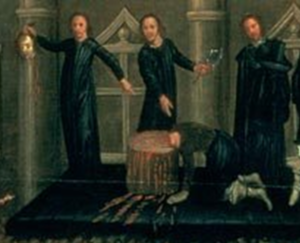
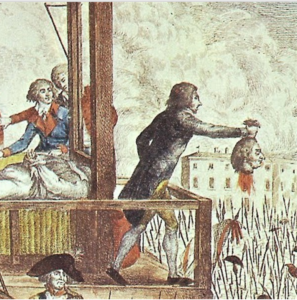
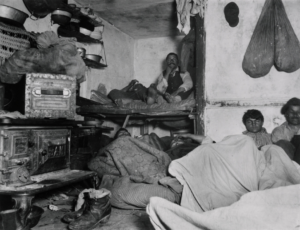
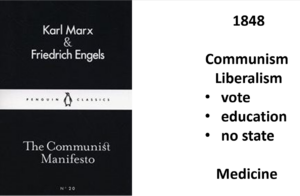
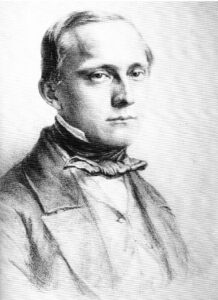
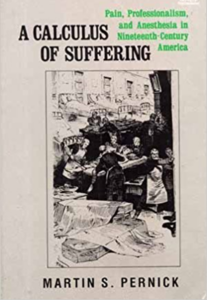
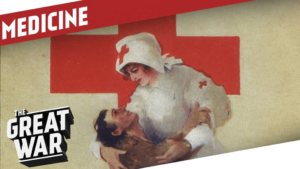
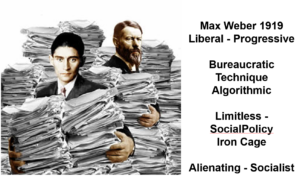
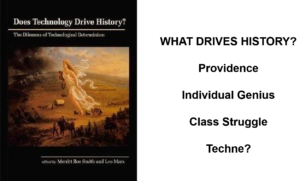
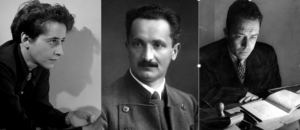
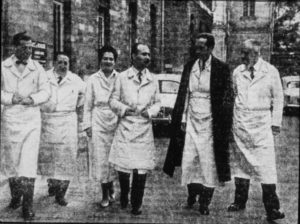

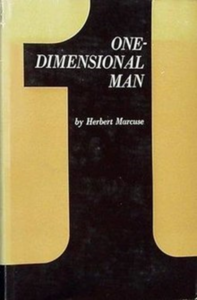


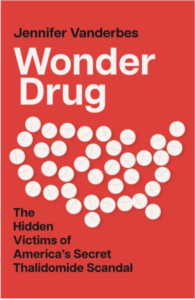
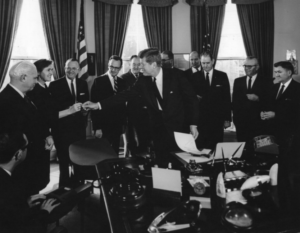
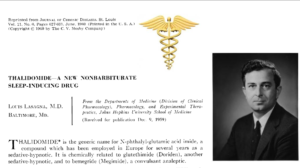
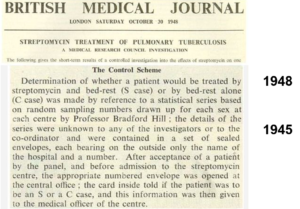

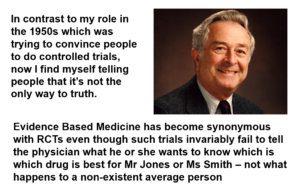
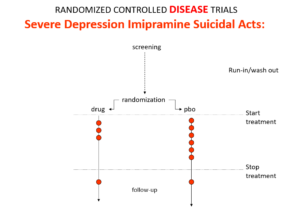
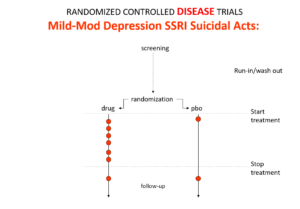
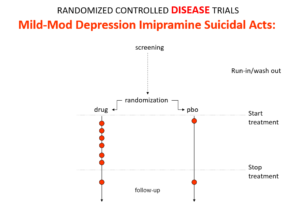
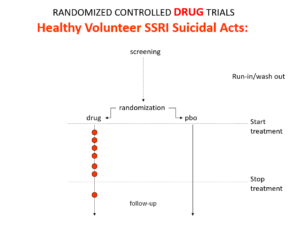
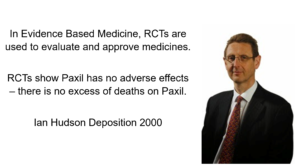



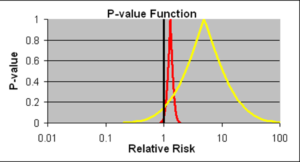
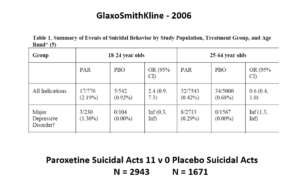

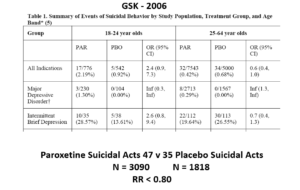
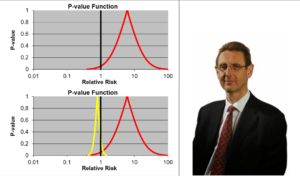
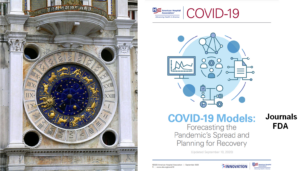
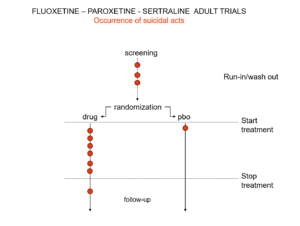
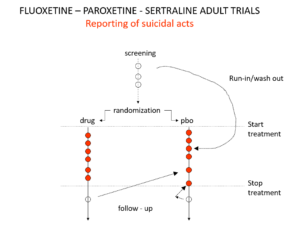
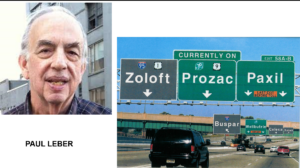
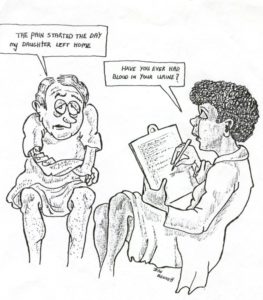

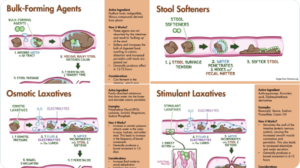
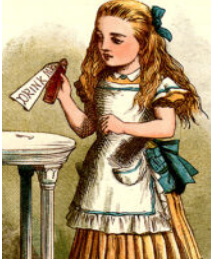

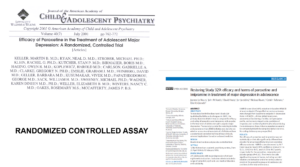
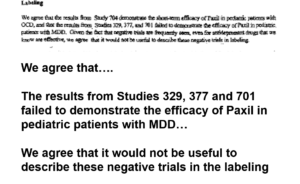
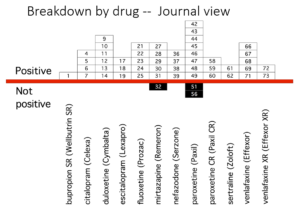
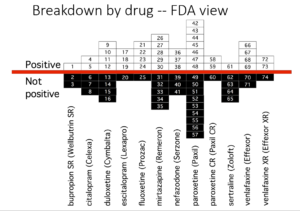

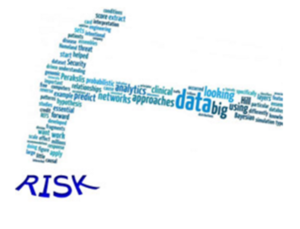
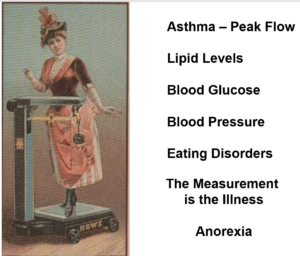
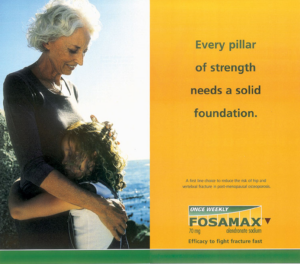


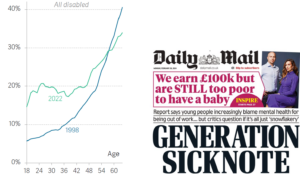
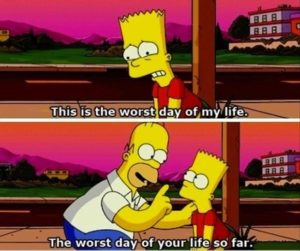

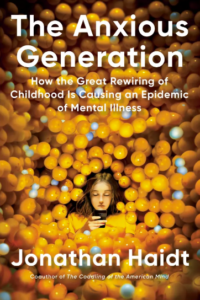
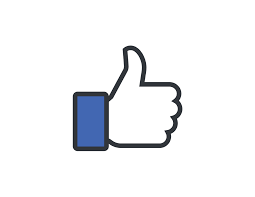

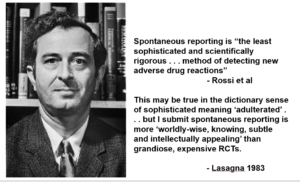
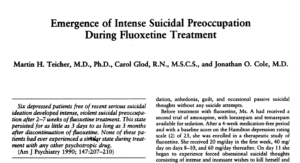
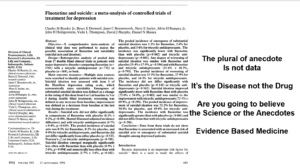
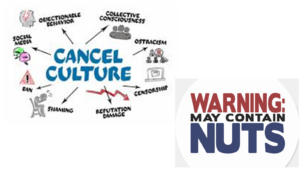

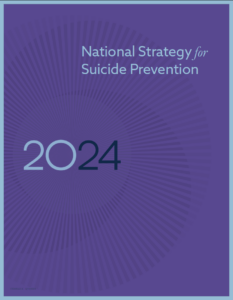
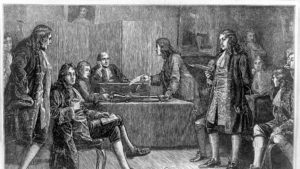




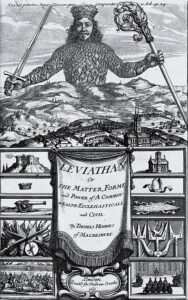
Truth, Trust and Health –
Slide 9. Saving lives is not necessarily a good business model –
‘Death of the ‘pharma moment’ –
Dr David Cartland
@CartlandDavid
This needs to go viral
https://x.com/CartlandDavid/status/1800520065047032173
https://x.com/CartlandDavid/status/1800518960858751079
Our health services industry has decades of experience in manufacturing positive outcomes for whatever intervention they are trying to sell us at the moment. And the medical literature is littered with examples of interventions that produced positive outcomes in terms of lipid levels, blood sugar, bone density, or depression rating scales, but which had unfortunate side effects for the patients who took them, like crippling or killing them.
And the same stupid tricks which were used to sell so-called “antidepressants” now are being used to sell sex reassignment surgery. What difference does it make if a pill lowers your depression rating scale score but you end up committing suicide anyway? What difference does it make if sex reassignment surgery lowers your score on a gender dysphoria rating scale if you end up committing suicide anyway? None that I can see.
susanne says
June 15, 2024 at 8:05 am
BREAKING: Medical Censorship Complex Targets BMJ Article for Retraction
Inbox
Aussie17 from PharmaFiles by Aussie17
Jun 14, 2024, 11:34 PM (9 hours ago)
BREAKING: Medical Censorship Complex Targets BMJ Article for Retraction
“The Princess Máxima Center explicitly distances itself from the controversial ‘anti-vax study’ by oncologists”
AUSSIE17
JUN 14
So what happened? Let’s start from the beginning.
A recent study published in the prestigious BMJ Public Health suggested a stark and worrying connection between COVID mRNA vaccines and an increase in global mortality during the pandemic. This significant discovery is supported by numerous other research papers, indicating that mRNA gene therapy, though hailed as groundbreaking, may in fact have caused more harm than benefit, as many have suspected.
This study published in BMJ has skyrocketed in interest, becoming the most accessed publication in the history of BMJ Public Health. The first mainstream media outlet to cover this was The Telegraph, in an article entitled “COVID Vaccines may have helped fuel rise in excess deaths.” The article highlights that “experts call for more research into the side effects and possible links to mortality rates,” which is urgently needed.
The authors from Vrije Universiteit, Amsterdam, wrote: “Although COVID-19 vaccines were provided to protect civilians from morbidity and mortality caused by the COVID-19 virus, suspected adverse events have also been documented. Both medical professionals and citizens have reported serious injuries and deaths following vaccination to various official databases in the Western World.”
This acknowledgment of real and potentially severe side effects underscores the necessity for transparency and further investigation, rather than censorship and suppression.
Lo and behold, two weeks later, the medical censorship complex rallied against it with a disturbing ferocity, turning their considerable resources towards forcing the retraction of the article from the BMJ Public Health. This organized backlash is nothing short of a modern inquisition, aimed at suppressing any dissenting voices in the scientific community. Such outrageous actions betray the very principles of scientific inquiry and intellectual freedom.
Two days ago, a hit piece appeared in what is often described as a “left-liberal” newspaper. It was penned by the notoriously pro-vaccine journalist Maarten Keulemans, who predictably cited physicians and “scientists” known for their unwavering support of experimental gene therapy.
SOURCE:https://archive.is/2024.06.11-180900/https://www.volkskrant.nl/wetenschap/prinses-maxima-centrum-neemt-nadrukkelijk-afstand-van-omstreden-antivaxstudie-oncologen~bfa34cc0/#selection-1027.0-1031.268
English Translation
The Princess Máxima Center explicitly distances itself from the controversial ‘anti-vax study’ by oncologists.
The Princess Máxima Center for Pediatric Oncology is severely embarrassed by a study that was published last week. The study wrongly suggests that the excess mortality observed in various countries after the coronavirus crisis is due to vaccines.
At the heart of this storm is Saskia Mostert, the lead author of the BMJ article. Mostert has been recognized as a remarkably brave scientist — one of the few who dare to investigate the murky waters of medical corruption. Mostert has published many insightful commentaries fighting against corruption in health systems, such as the one titled “All It Takes for Corruption in Health Systems to Triumph, Is Good People Who Do Nothing”
SOURCE:https://www.ijhpm.com/article_3641.html
Yet now, her own home institution, the Princess Maxima Center, is shamefully attempting to isolate her and discredit her work. In what can only be described as a witch hunt, the center has announced an investigation into “how it was produced in more detail” and is looking for any pretext to retract the paper.
Here is the complete statement from Saskia Mostert’s home institute. (Highlights are mine)
The Princess Maxima Center Distances Itself from Publication on Excess Mortality during the COVID-19 Pandemic
June 11, 2024
The Princess Máxima Center distances itself from the publication “Excess mortality across countries in the Western World since the COVID-19 pandemic: ‘Our World in Data’ estimates from January 2020 to December 2022”.
Serious questions have arisen regarding the publication “Excess mortality across countries in the Western World since the COVID-19 pandemic: ‘Our World in Data’ estimates from January 2020 to December 2022”. Therefore, we will conduct further investigation into the scientific quality of this research. The Princess Máxima Center deeply regrets that this publication might give the impression that the importance of vaccinations is being questioned.
Originally, the idea was to examine the impact of COVID measures on, among other things, the mortality rate of children with cancer in low-income countries. During the study, the focus shifted in a direction that, in our opinion, lies too far outside our field of expertise: pediatric oncology. We are not experts in the field of epidemiology and do not wish to create such an impression. Therefore, the Máxima Center explicitly distances itself from this publication. We should have been more vigilant regarding the creation and results of this publication and will investigate how it was produced in more detail. If it is found that the publication was produced carelessly, it will be retracted.
As the Princess Máxima Center, we want to emphasize that we strongly support vaccination and that this publication should certainly not be read as an argument against vaccination. The study in no way indicates that there is a link between vaccinations and excess mortality; that is explicitly not the finding of the researchers. We therefore regret that this impression has arisen.
Potential Conflict of Interest?
When you scratch the surface, it’s no surprise to find that the Princess Máxima Center receives funding to conduct clinical trials. Specifically, two of the products they are funded for are Bosutinib and Inotuzumab, both cancer treatments developed by Pfizer.
Could this be the real reason why the Princess Máxima Center is distancing itself from Moskert’s study and now searching for reasons to retract it? Is it possible that Pfizer, the grand benefactor funding their research, isn’t pleased with Moskert’s findings?
Given this blatant conflict of interest, the Princess Maxima Center should immediately recuse itself from any investigation into Mostert’s study. Carrying on as the ‘impartial’ judge in this matter is farcical and deeply unethical.
This concerted effort to silence scientific discussion and bury inconvenient truths is profoundly disturbing. It illustrates the extent to which the pharmaceutical industry’s influence permeates both academic and media institutions. The eagerness to censor and vilify researchers like Mostert reveals an industry more interested in protecting its profits than fostering genuine scientific exploration or public health. The pharmaceutical giants have weaponized their funding and influence, turning trusted institutions into little more than mouthpieces for their narratives.
What we are witnessing is not just the suppression of a single study, but an assault on the very core of scientific integrity. Researchers are being bullied, silenced, and ostracized for daring to question the prevailing orthodoxy. This dangerous precedent undermines public trust in science and can have dire consequences for future medical advancements.
Just last month, I wrote an article that cited some doctors who are bullying others into silence. These doctors, who are making a living out of sucking the tits of the pharma industry, need to stop.
Of Silent Doctors and Bullying Doctors
AUSSIE17
·
MAY 10
Of Silent Doctors and Bullying Doctors
Recently, there were numerous new studies that raise concerns about the effects of mRNA. Feeling compelled by this, I took the initiative to reach out to several doctors. Some I know personally, and others I’ve been introduced to through referrals. They’re all quite informed and, for the most part,…read this on Aussie 17
Read full story
These institutions and doctors who are part of the medical censorship complex need to have a light shone on them and be shamed publicly. Please share this widely.
Comment *
There is a fundamental difference between Princess Máxima Center – which wants to retract Saskia Mostert’s BMJ article, and Mostert who works there.
In her article, Mostert declares she has no conflicts of interest
Princess Máxima Center is heavily dependent on Pharma funding.but does not mention this in the retraction request.
How much?
Follow this link
https://www.transparantieregister.nl/find-your-healthcare-institution-or-patient-organisation
in the box “Zoeken op Kvk-nummer” insert the number 54327946
There you will see 3 years of pharma donations to the center
You may recognise a few vaccine manufacturers in that list.
How different values come into place to play a vital role through the filter of change and discovery over time.
Leslie Manookian talks about her big win in the courts v LA Unified School District’s vaccine mandates for employees:
https://sashalatypova.substack.com/p/leslie-manookian-talks-about-her?publication_id=870364&post_id=145776828&r=1upesz&triedRedirect=true
“Safe and effective for what?”
I’m correlating to art:
https://m.youtube.com/watch?v=FTETzUKT6wM&pp=ygUaSGFuaSByYW5pIHdoaXNwZXJpbmcgaG91c2U%3D
Remember the ‘closed minds’; when they e tried to take down David H –
https://davidhealy.org/whats-going-on-here/
Subject: Dear David.
To: David Healy
Cc: Simon Wessely , Barney Carroll , Paul Summergrad , Jeffrey Lieberman , Ronald Pies
I have watched this story play out with deep misgivings. I know you meant well, but also know you went way overboard categorically declaring meds to be the causal factor in this mass murder, when there were so many other possible contributing factors and no real proof meds were among them. It reduces your credibility when you make such extreme statements and also makes it harder for people like me who are trying to curb medication excess, while encouraging its proper use (against the false claims of extremists who somehow blame all psych problems on meds). I know how much flak you have already taken and that you must feel backed into a corner. My recommendation would be that you issue further clarification on the difficulty of establishing causality and the essential benefits, as well as the considerable risks, of psych meds. To do otherwise makes you responsible for patients going off, or refusing to start, meds they may desperately need. Protecting people ffrom unneeded meds is your noble calling, but should not result in your unneceessarily scaring people off needed meds.
What do you think?
Sorry buster, you got it all wrong – the clarity, with which David H, takes the genie out of the bottle,’ with the ‘senses’, exposes the cc’s as the charlatans, that they are –
‘Hi-jacking’ our brain, increasing the risk of the mechanism of reflex. which can kill us.
The ‘almost moment’ in our own lives.
Who could ever have thought, that the brain would become so incapacitated, and the ‘actions’ so swift with an ‘instantaneous reaction’. I often think of Stephen O’Neill, hanged, so many hanged; Stewart Dolin throws himself, under a train. As did Romain, still a child. All these deaths, which we know so well.
If you had told any of these fine people, this is what they were going to do, I am certain, they would all have been incredulous. All sense of control lost, not a shred of illumination, nothing to hold them back.
No thoughts of repercussions, basically no thoughts.
It took me years and years, to try and rationalise that ‘it would not happen again’.
Alana Cutland, the most beautiful and intelligent student, throwing open a plane door and jumping out over Madagascar.
The hospital registrar after speaking with me, in the general hospital, after I got them to give me back the Seroxat, and calm then reigned, wrote to my gp, not the psychiatrist, said I had an ‘impulse’.
He didn’t understand it, but remarkably, he got the word right
: a sudden spontaneous inclination or incitement to some usually unpremeditated action
Then you get ‘bewilderment’, which is also when the brain/mind is trying to make sense of it.
Wessely just can’t help himself, interfering…
Simon Wessely reposted
Robert Howard@ProfRobHoward
https://x.com/ProfRobHoward/status/1798588638751510940
Fantasists – Their Game will not last, whilst RxISK, ‘Senses’, is ‘the only game in town’ …
This is a Post Office scandal which eventually will be exposed. Iam convinced and energised, that those who have turned a blind eye will eventually have to look us in the eye and explain why. Why they allowed this to happen
We owe it to our son Sam, a life taken by Citalopram.
If you watched the ITV film on the PO Scandal, and you watched the 4 Panorama programmes on Seroxat, and you watched the PO Inquiry, and you watched GSK paying $3 billion for fraud, and you watched –
Seroxat and Panorama: Timeline
http://news.bbc.co.uk/1/hi/programmes/panorama/3705158.stm
GSK wins legal case over withdrawal effects of paroxetine after 13 years and £9.33m in costs
https://www.bmj.com/content/370/bmj.m2799
Wendy Burn CBE (She/her)
@wendyburn
·
Jun 18
Robin Murray opens the session on Deprescribing by saying he has taken antidepressants twice but didn’t have any withdrawal symptoms.
The CEO of the PO, reminds me of Wendy Burn, without the apologies, or handing back the gong, and without the crying episodes –
As a litigant,, I am not sure that I feel ‘energised’ …
Robin Murray re Annie’s comment ·
Jun 18
‘Robin Murray opens the session on Deprescribing by saying he has taken antidepressants twice but didn’t have any withdrawal symptoms.’ (So what? If he didn’t nobody can)
R M said in 2017
Mistakes I Have Made in My Research Career
Schizophrenia Bulletin, Volume 43, Issue 2, 1 March 2017,
I started in psychiatry at the Maudsley Hospital and Institute of Psychiatry, London, in October 1972, and spent the next 3 years completing my basic training. I
In the course of this project, I managed to offend the then Professor of Psychiatry at the Institute, Denis Hill, by writing an anonymous editorial in which I criticized the state of UK psychiatric research including his department.2 Unfortunately 1 day soon after, when I got on the London underground, there was Professor Hill. He motioned me to sit next to him, and immediately demanded “Murray, do you know anything about this editorial in The Lancet?” I had to admit that I did. He was not pleased—so colleagues suggested I went to the United States for a year, to let him calm down. By the time I came back I was forgiven—he was a kindly man. (This level of ‘suck up’ to the hierarchy still goes on)
‘A detail from a long para need to read the whole for more … ‘Unfortunately, I, and most others, ignored his insight, and it was not until 30 years later, in 2008, that …..’
What Have I Learned?
If I had the chance to have a second career, I would try harder not to follow of the fashion of the herd. The mistakes I have made, at least those into which I have insight, have usually resulted from adhering excessively to the prevailing orthodoxy. Fortunately, I have often been rescued from this by the arrival of a brilliant young research fellow who has proposed a novel approach; I have usually resisted her/his idea initially before eventually come round to its merits. Sadly, this reliance on the corrective influences of younger colleagues has its limits. For example, David Marsden was already a famous professor when I met him; he must have been too senior for me to take seriously his insightful comments on the effects of antipsychotics on the brain! Consequently, I sailed on, believing the same false dogma for several decades.
This bit is probably irrelevant but if they want to big each other up big chunks of autobiography have go missing
In the ‘my career’ write up he neglects to include that his first job was in a vile institution where people were sat at trestles and made to count 42 matches into boxes for a well known company. Nobody spoke -counting and conversation is pretty impossible. An attraction to the job was free accomodation for R.M He was also prescribing to people lining up for drugs said he could identify which ones were having sex as he needed to prescribe meds to them for sexual diseases. They were in that place for many years and may well have been having loving relationships.
One of the highly regarded men he mentions used to show slides of women in bathing suits to spice up his lectures to young male trainees. I have deleted the refs ages ago but they were too often a pretty sordid lot.
Truth, Trust and Health
recovery&renewal reposted
Harriet Vogt
@shvogt
·
6h
‘We have suffered life changing harm from antidepressants-some of us have been personally disabled for life, some of us have had our children or husbands killed by the adverse effects they induce. ..others may suffer the same fate, due to disinformation’.
Patient safety: a letter to the President of the Royal College of Psychiatrists
https://holeousia.com/2024/06/19/patient-safety-a-letter-to-the-president-of-the-royal-college-of-psychiatrists/
However, we have some hope that you, as current President, can lead the College to a place where patient safety is given its rightful priority. For now, we would ask that the College makes a detailed and specific statement on how it will practically support individuals who have been harmed by taking antidepressants as prescribed. In terms of culture, the College could start by addressing the use of denigratory language by its members in relation to those who are doing their best to offer learning from the experience of taking antidepressants, particularly in the longer term.
We look forward to your response.
Yours sincerely,
Peter Scott-Gordon, Alyne Duthie, Nicolas Destors, Yoko Motohama, Vincent Schmitt, Marion Brown, Cathy Wield, Daniel Demers, Ian Morgan, Tania Morgan, Dan L. Johnson, Legai Lara, Hélène Périsse, Aurore Lesellier, Armony Venereux, Mannoni Giusiana, Mannoni Gilles, Kumi Chauveau, Christophe Chauveau
Outside, on the pavement
Is this a man wearing a sandwich board saying ‘the end of the world is nigh’. Far from it.
With a flourish of his pen, Peter Gordon, the lone bearer of his banner, stands outside the Royal College of Psychiatrists International Congress in Edinburgh, has written the most grounded, entertaining, riveting, description of his ‘day on the street.’
Almost like a doorman at a swanky hotel, Peter knows the ‘guests’ by name and his little chats are as illuminating as his ability to engage. Brave, bold, Peter, with ‘Truth’ at his side, lost his ‘Trust’ as an NHS psychiatrist when his appalling experience with Paroxetine/Seroxat almost cost him his life.
https://holeousia.com/2024/06/19/outside-on-the-pavement/
18th June 2024, Edinburgh. A diary of my day.
Prof Crichton questioned my mental health directly with my NHS employers. He did so, behind my back, because I had asked him “difficult” questions about antidepressant prescribing in Scotland
11.10 am. Gosh! That’s Professor Sir Simon Wessely! His casual gait and light suit mark him out. I say “hello Simon”. Initially Sir Simon acts as if he knows who I am. After a bit of chat he says “and who are you?” I reintroduce mysel’: a light bulb comes on. “Peter, you are looking well”. I reply “I am a gardener now”. I thank Sir Simon for personally communicating with me in the time that he was President of the College, but also politely say that he could have done more in relation to pharma-psychiatry and patient safety. Simon graciously replies “Yes, I guess I could”. We shake hands. This is a meeting with one of my former correspondents. In that correspondence Simon Wessely had ALL the power. He understood this. It was implicit in all his communications with me. I attempt to explain to Sir Simon how his ‘internal memo’ about me to my psychiatrist colleagues left me totally isolated [this written, as President of the College, advised caution in communicating with Dr Gordon “the one who writes to the College”].
“Storytelling is the Soul of Activism”
A narrator par excellence
Wee films, great music –
This is Dazzling…
“Since then apparently independent social media like NHS Digital list SSRI side effects as nausea, headache and other relatively minor issues – omitting suicidality, sexual dysfunction, dependence or any other significant effects because, they say in email responses if asked, they wish to avoid deterring people from seeking the benefit of treatment.”
this must be the most ridiculous excuse used to justify any practice; they won’t publish the harmful effects of a drug because people then might stop taking them. it basically means they just want people to take those drugs, no matter what. why is the reputation of these drugs so important? the most obvious reason would be that journalists themselves are using them. how can they publish information suggesting they are risking their health when they are the supposed to be the experts and most informed persons about such issues. even more importantly, they are probably allowing their children to take these drugs, which makes them complicit in any harmful results. the chain of complicity binds everyone into silence. I think the central question is the function of medicine in today’s society. medicine allows any contentious matter to be pushed aside in benevolent negligence and removes conflicts from the area of politics. medicine is a branch of expertise where knowledge and roles matter the most, the doctor is always right and the patient is supposed to be patient, and passive. it is a very effective form of politics in the disguise of non-politics. it is very hard to smash that front if you don’t question and understand how ‘scientific’ knowledge is actually produced and by whom.